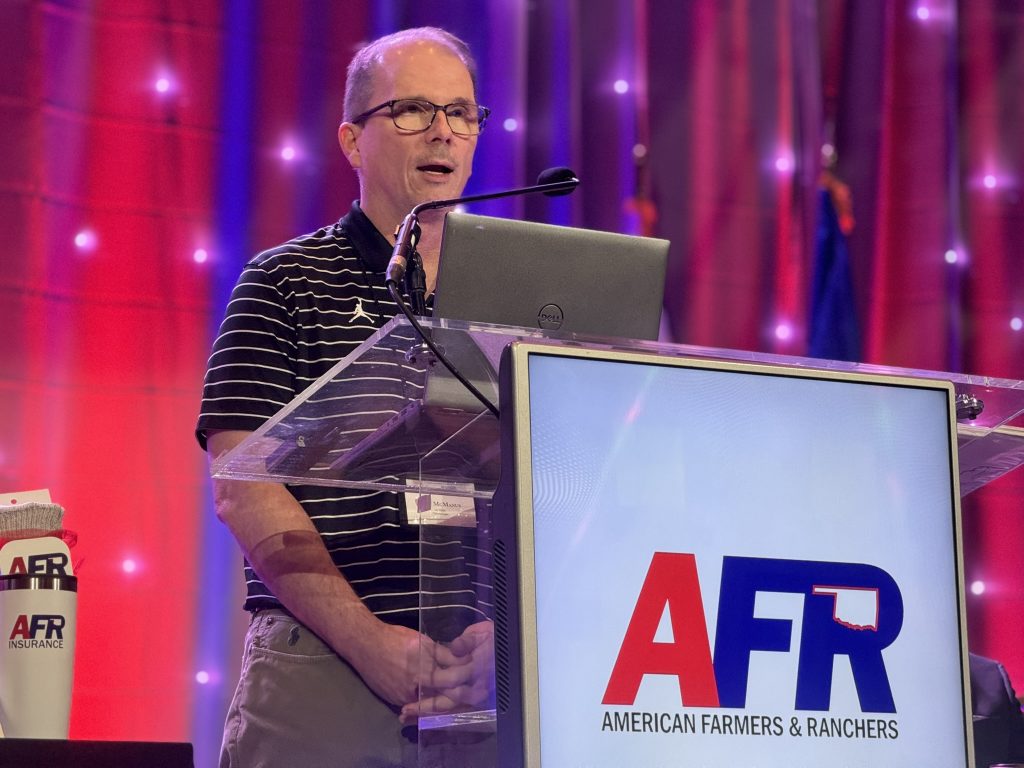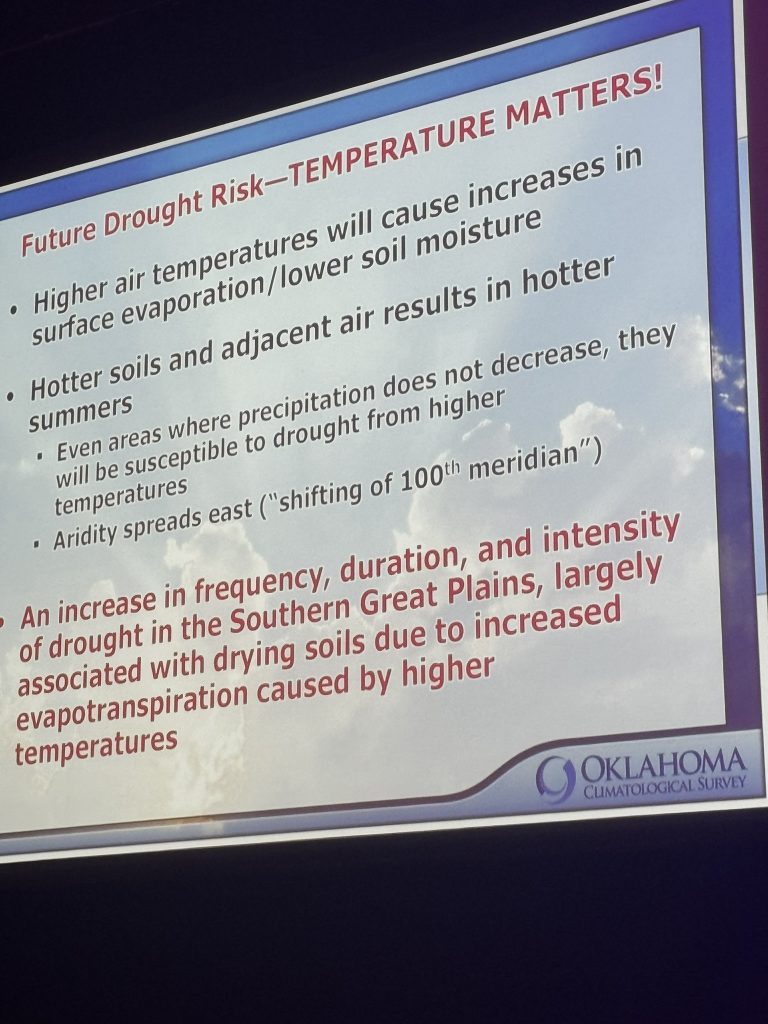
At the 2024 American Farmers and Ranchers Convention in Oklahoma City, Associate Farm Editor Reagan Calk had the chance to visit with State Climatologist Gary McManus about recent weather patterns and a weather outlook.
Due to above-normal temperatures lately, McManus mentioned the chance of a false spring.
“That is what you worry about when you get this above-normal temperature regime setting in, and then in March or early April, even, you get this big-time freeze event, and then, of course, that does a lot of damage to the wheat crop, it does a lot of damage to our orchards and things of that nature,” McManus said. “It is something to keep an eye on.”
McManus said El Nino is expected to fade out by the summer, then La Nina is expected to form quickly.
“We will just have to wait and see on the strength,” McManus said. “Strength does matter with La Nina, of course, as it does with El Nino.”
McManus said this event will certainly tilt the odds towards more drought if there is another full year of La Nina.
Looking ahead, McManus said there will be more heat waves and more intense precipitation events. Extreme weather events will be more common, McManus added, so there will be longer periods between rains, but when it does rain there will be more at once.
“One of the things we are going to be watching for with the increase of temperatures over the next couple of decades or so would be an increase in drought severity,” McManus said. “So, you take a normal drought, and you transform that into a more severe drought.”
Oklahoma’s Observed Temperature and Precipitation Trends (from Gary McManus Presentation)
Temperature:
- Annual average temperatures have increased 1-2F since early 20th century
- Much of that warming has occurred in the winter months, and in minimum temperatures
- Not much change during summer yet, however…
- Increase in frequency, duration, and intensity of extreme heat events, but with a reduction in extreme cold events.
Precipitation:
- Winters have gotten wetter, “spring” rainy season has shifted/extended later into summer
- Less snow, but when it snows, it can REALLY snow
- The frequency and intensity of significant precipitation events have increased over the last few decades.
Temperature and Precipitation Projections for Oklahoma In the Next Few Decades (from Gary McManus Presentation)
Temperature:
- Extreme heat will become more common. Temperatures like the summer of 2011 will become increasingly likely to occur.
- Summer becomes longer and spring weather arrives earlier
- Winters warm- longer frost-free periods and a longer growing season
- Annual average temperatures in the Southern Great Plains are project3ed to increase by 3.6-5.1 degrees F by the mid-21st century (10 degrees by the end of the century)
Precipitation:
- Small changes in annual rainfall, but wetter winters and drier summers
- Precipitation frequency will continue to increase, but period between rain events will also increase
- Fewer soaking rains (more time to dry out between events)
- Less snow


















